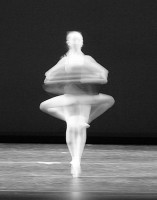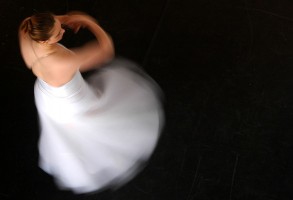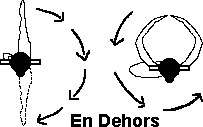If you press, the upper body and center of gravity (CoG) needs to move over the leg, and if you spring, the supporting leg meets your CoG in the middle. Which do you prefer? In this post Lauren Warnecke explores the benefits and mechanics of both to provoke thought and conversation.
turns
9 Tips for Improving Pirouettes
5. “Connect” your arms to your back – you should feel and imagine width across the back and shoulder blades and the arms should maintain their position (don’t “wind-up” for a turn)
6. Take off from a properly placed and expansive plié for power in the turn.
7. Strengthen your ankles supporting the relevé – if you are wobbly, sickled, or pronated, this will ruin your turn.
8. Mentally, make a choice to come down from the turn, don’t “let” gravity make the choice for you.
En Dehors, Out the Door
En dehors and en dedans! Frequently misspelled and endlessly confused, let’s go over these dance directions! A bird’s eye view helps to illustrate the sometimes puzzling terminology.
Teaching Piqué Turns
Given my recent Piqué Turn How-To, I thought I would expand into my process for teaching this turn.
Defining and Dissecting a Piqué Turn
What is a Piqué Turn? Generally when a dancer is asked to perform a piqué turn in class, he/she understands that it is likely they are being asked to perform a traveling turn that begins with a step onto a straight leg, as demonstrated at the start of this combination (note: this video is an […]




